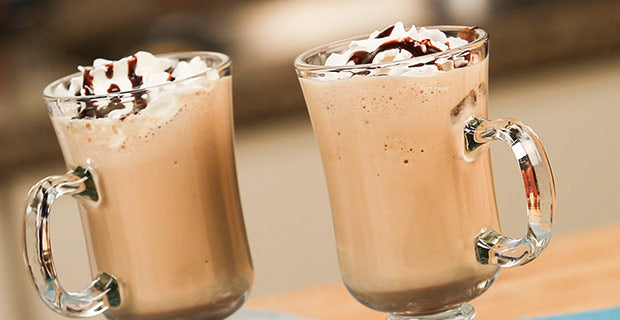How to Grind Coffee Beans in Your Blender

September 29 is National Coffee Day. Did you know that more than 50 percent of Americans drink coffee every day? And 12 billion pounds of coffee are consumed each year worldwide. That’s a lot of coffee!
Coffee can be enjoyed in many different ways: as a latte, mocha, frappé, and more. Here's another piece of trivia: Did you know that you don’t need a grinder to grind your own coffee beans? You can grind coffee beans in a blender!
Benefits of Grinding Your Own Coffee Beans
By now you’re bound to have heard at least one person recommend ditching the store bought stuff, to grind your own coffee at home instead. They’ll tell you it tastes better than anything you can buy in stores. So, does it actually taste better? The answer is, yes, fresh-ground coffee actually does taste better. It also turns out that it’s more than a personal taste preference — there’s science to back it up.
Oxidation
Coffee beans contain complex compounds that are responsible for a brew’s flavor and aroma. Because some of these compounds aren’t overly stable, they can change quickly. The naturally occurring process of oxidation causes flavor and aroma compounds to be released from your coffee beans, and grinding the beans triggers the oxidation process. This is great if you’re ready to brew immediately, but too much of the flavor will be released if you wait too long.
Moisture
Oils in coffee beans are water soluble which is important because it dilutes the beans, giving us the signature taste and smell of coffee. However, even moisture in the air can start to dilute your coffee beans. Grinding the beans causes more surface area for moisture to dissolve the oils, leading to quicker dilution, and rapid loss of flavor.
Contamination
The oils in coffee beans are extremely delicate and they become exposed after grinding. This makes them susceptible to contamination by other odors in your kitchen. Grinding your beans immediately before brewing can help you avoid drinking a cup of coffee that tastes like last night’s dinner.
Carbon Dioxide Depletion
Carbon dioxide is what delivers the flavor from the beans’ oils to your cup of coffee, and grinding the beans creates more surface area for carbon dioxide to escape. The longer ground coffee sits, the more carbon dioxide is released. Grinding coffee and then storing it, rather than brewing it right away, can cause a rapid depletion of carbon dioxide, leading to a significant loss of flavor.
Store-bought coffee can be decent to drink but for the freshest cup of coffee, it’s best to grind the coffee beans yourself, just before brewing. If you’re ready to try freshly ground coffee beans, you can use your Blendtec blender to grind them every morning. Place 1 cup of coffee beans in the Twister jar, 1½ cups in the FourSide jar, or 2 cups in the WildSide+ jar. Secure the jar lid, and run on Speed 5 for 20–30 seconds or until desired texture is reached.
Once you've ground your own beans, give one of these delicious blender coffee beverages a shot:






What is the speed 5 you are referring to? Mine just has low, medium and high
Hello,
i would recommend using the twister lid for the jar to help move all the beans. There isn’t a way to help avoid the powder at the end that forms unfortunately.
Would your recommend the Twister or Standard jar for grinding coffee – I have both. I assume the Twister. If using the Twister, would you recommend turning the cover piece as you blend the beans? And then, would you rotate it back and forth or just tun it. If just turn, in which direction? Maybe doesn’t’ really mater, but thought I would ask. Also, what is the best way to reduce the amount of powder that forms at the bottom?
We recommend having a separate jar to grind coffee beans and other kinds of spices, as the taste may have an effect on other items you blend later.
I know my jar may haze and smell like coffee if I use it to grind coffee beans but will it alter the taste of anything I make after?
Leave a comment